PM newspaper
The PM newspaper first began publishing on 18th June, 1940. The newspaper accepted no advertising in an attempt to be free of pressure from business interests. It was decided to produce a tabloid that was the "only daily picture magazine in the world". (1) There is some confusion about why it was named PM. It has been claimed that it was an abbreviation for "Picture Magazine" or Photographic Material". (2) Another theory is that it referred to the time of day that it was printed. (3)
The PM relied on the financial backing of Marshall Field III, one of the richest men in the country. He declared, "I'm not supporting a newspaper, I'm supporting an idea." Another early backer was Charles Edward Marsh. In its first editorial, that appeared on the front page, Ralph Ingersoll, the editor, wrote: "We are against people who push other people around" and demanded support for the Allies in the Second World War. (4) It has been described as "one of the most controversial and unusual left-leaning American newspapers of all time." (5)
Ingersoll wrote in the first edition: "PM starts off at the most critical moment in the history of the modern world. The news is too big, too terrible to seem for a second like a break for a newspaper coming into being. Instead it dwarfs us. It pitches us, without preparation, into the midst of horror. It means that we, who wanted time to grow, shall have no youth - shall be gray-haired from birth." (6)
Over 11,000 people applied for the 150 jobs available at PM. People who did work on the newspapers included Lillian Hellman, Dashiell Hammett, Dorothy Parker, I. F. Stone, Ben Hecht, Erskine Caldwell, Walter Winchell, Dalton Trumbo, Margaret Bourke-White, Ernest Hemingway, Donald Ogden Stewart, James Thurber, Crockett Johnson, Lillian Ross, Leo Huberman, James Wechsler, Max Lerner, Benjamin Spock, Elizabeth Hawes, Amos Landman, Leane Zugsmith, Carl Randau, Louis Kronenberger, Rae Weimer, Hodding Carter, Penn Kimball and Shirley Katzander.
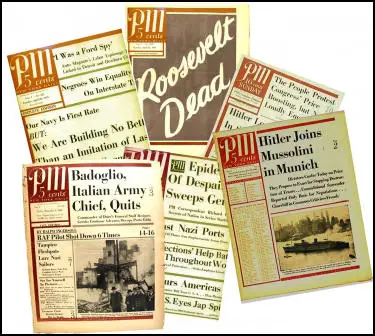
The newspaper campaigned for civil rights and attacked Jim Crow Laws, segregation and lynchings in the Deep South. One of its first stories was to expose the practice of the American Red Cross to segregate blood, deeming that the blood from black donors could not be used for white soldiers. (7)
The Reverend Edward Curran, the head of a right-wing pressure group, Christian Front, accused the newspaper of being an "atheistic, pro-British, Moscow-inspired propaganda mill." (8) Ingersoll admitted that his journalists did hold strong political views: "We shall hardly be unbiased journalists. We do not, in fact, believe unbiased journalism exists." (9)
In August, 1940, Eugene Lyons, wrote an article for the American Mercury where he accused the PM newspaper of being a "communist front". (10) Ingersoll replied by arguing: "I think this country is a swell place, but I don't think it is nearly good enough: Right-minded men can and must do something about it, each in his own trade. My trade is journalism. The paper I get out will not be neutral on the issues of the day. It will be aggressively liberal." (11)
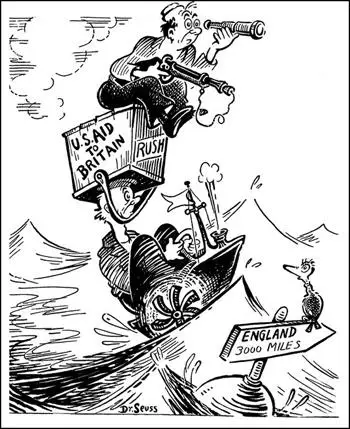
In reality the newspaper was hostile to the Communist Party of the United States (CPUSA) because of its support for the Nazi-Soviet Pact. A declassified FBI file claimed that Ralph Ingersoll was "probably not a Communist, although he responded to some of the Communists' ideas and associated with Communist sympathizers and some known Communists". (12)
Elizabeth Hawes, the fashion designer, wrote the "News for Living" column. She was the author of Fashion Is Spinach (1938) an autobiographical critique and exposé of the fashion industry. A well-known figure on the left, it was claimed that her column was "a cross between the traditional women's page of newspapers and the consumer activism of the Popular Front." (13)
The PM made use of large photographs and the cartoons of Arthur Szyk and Theodor Geisel (Dr. Seuss), both strong opponents of Nazi Germany. The newspaper managed to achieve a circulation of 200,000, however, without the ability to carry advertising, it could only survive with the sponsorship of Marshall Field III, who now owned Chicago Sun, another pro-intervention newspaper. (14)
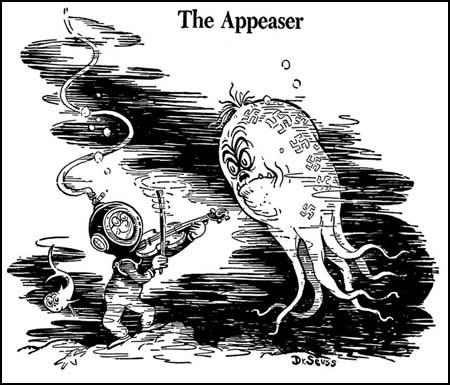
PM argued for the United States involvement in the Second World War. On 21st April, 1941, Ralph Ingersoll wrote an editorial where he gave his full support of the Allies in their war with Nazi Germany: "Others might not feel the way I do... but we have no choice but to stand against the armed expansion of Fascism, even if that stand leads to our starting to fight Hitler before he puts us in a spot in which we have to fight." (15)
The newspaper became a leading opponent of Charles Lindbergh and the America First Committee. (16) It was especially highly critical of speech he made in Des Moines on 11th September, 1941: "The three most important groups who have been pressing this country toward war are the British, the Jewish and the Roosevelt administration. Behind these groups, but of lesser importance, are a number of capitalists, Anglophiles and intellectuals who believe that their future, and the future of mankind, depends upon the domination of the British Empire... These war agitators comprise only a small minority of our people; but they control a tremendous influence... It is not difficult to understand why Jewish people desire the overthrow of Nazi Germany... But no person of honesty and vision can look on their pro-war policy here today without seeing the dangers involved in such a policy, both for us and for them. Instead of agitating for war, the Jewish groups in this country should be opposing it in every possible way, for they will be among the first to feel its consequences." (17)
The headline of the newspaper in response to the speech stated: "Lindbergh Lays Foundation for Fascist Revolt in U.S.A." (18) Other targets of its anger included right-wing figures such as William Randolph Hearst (whose newspapers described PM as a "Commie" rag), the leading racist and anti-Semite in Congress, John Elliot Rankin, and Father Charles Edward Coughlin. As Myra MacPherson has pointed out: "freed from advertisers, it passionately supported unions and workers' rights, including the controversial right to strike during wartime... and crusaded for an increase in the minimum wage." (19)
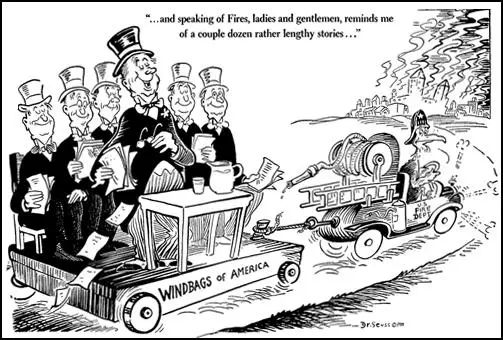
Thomas E. Mahl, the author of Desperate Deception: British Covert Operations in the United States, 1939-44 (1998) has argued: "PM never attracted enough circulation to make money, but it was a wonderful propaganda vehicle despite its small circulation. In September, 1940, Field bought out the other backers for twenty cents on the dollar." In a declassified report from British Security Coordination it listed PM as "among those who rendered service of particular value". (20)
In June, 1941, Nazi Germany invaded the Soviet Union. Ralph Ingersoll wrote: "This is the time to keep as cool as the news and the temperature permits, to watch what happens and to remember that your President foresaw it many months ago when he warned you that this was a total war. The sudden scrapping of the world's most momentous pact is one of the things total war means. What it might mean to the USA before it is over could be just as dramatic - if we ever let anything happen to Great Britain or we take our eye - for one single moment - off our enemy, Hitler. It will not end until he is destroyed." (21)
Members of the Communist Party of the United States now became supporters of PM magazine. James Wechsler, an anti-communist member of staff complained: "When the Nazis invaded Russia in June, 1941, Ingersoll really got the old Popular Front gleam in his eye." (22)
Joseph Stalin was now portrayed in a favourable light by the newspaper. I. F. Stone wrote that "by his attack on the Soviet Union... Hitler has landed a huge anti-Nazi army on the Continent... Hitler had hoped that dislike for Stalin's ideological table manners and conversely, Soviet dislike for ours - would keep the leadership of the Western free countries from effective united action, and it may." (23)
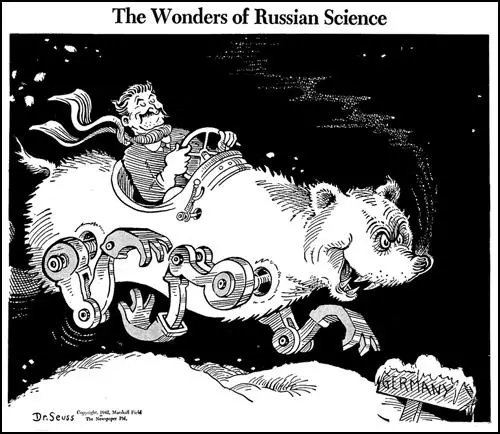
Justice Louis Brandeis died on the 5th October, 1941. Brandeis was one of the most important figures on the left in America and I. F. Stone produced a very positive obituary in the PM. He argued that the "Attorney for the People" derived his strength from his "vast appetite for the concrete details of any situation or problem, and his intellectual patience... Brandeis believed in the reasonableness of human beings and the possibilities of reaching them by persuasion." (24)
Theodor Geisel (Dr. Seuss) produced a series of cartoons attacking Adolf Hitler and his American apologists. When the isolationist politician, Gerald Nye, endorsed the pro-Nazi magazine The Cross and the Flag, produced by Gerald L. K. Smith, he drew Nye as a horse's ass. (25)
IIn November, 1941, I. F. Stone carried out an investigation for PM that enabled him to reveal details of how U.S. oil companies were shipping oil to Nazi Germany by way of Franco's Spain. Stone accused the government of maintaining a cover-up: "The remedy, in the opinion of the State Department, is not to shut off the oil but to shut off the information." (26)
After the bombing of Pearl Harbor, the United States joined the war. James Wechsler later recalled that Ralph Ingersoll "walked about the city room in a kind of vacant trance" and finally "confessed at a staff meeting that he was no longer certain of the paper's excuse for existence. Its mission was accomplished. The nation was at war." Circulation increased to 90,000 but it was still 150,000 short of the figure estimated that was necessary to get PM into profit. (27)
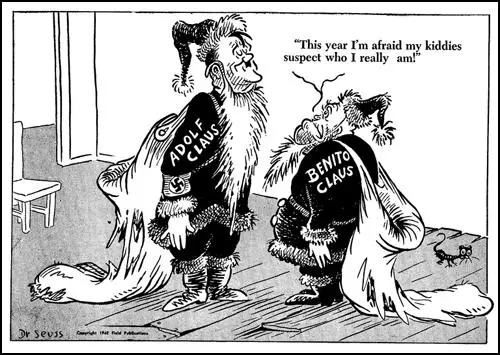
I. F. Stone was one of the journalists recruited by Ralph Ingersoll. On 14th March, 1942, Stone attacked Martin Dies the chairman of House of Un-American Activities Committee (HUAC): "It is a pity that Hitler's Reich does not have a Martin Dies. A special Committee of the Reichstag to harass Nazi officials and spread suspicion of Germany's allies could be forgiven the occasional exposure some notorious democrat. On a purely reciprocal basis the Reich might well go in for a Dies committee of its own in exchange for the growing readiness of our Congress to adopt innovations from Berlin." (28)
Arthur Szyk became an important figure at the newspaper. Most of Szyk's cartoons dealt with the plight of the Jews in Europe. This had the full support of Ralph Ingersoll who felt just as strongly about this subject and asserted the newspaper's "policy of aggressive anti-Fascism". He added that the best way this could be achieved was "by aggressive support for England in its war with the Fascist countries." (29)
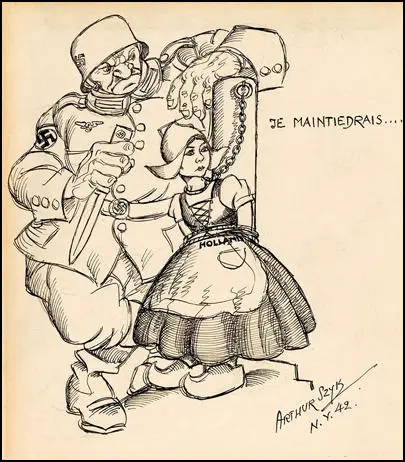
In September 1942, Szyk’s mother and brother were seized from the Lodz ghetto and murdered at Chelmno Extermination Camp. (30) By this time it had become clear that Adolf Hitler was determined to destroy the Jewish community in Europe. (31) In the PM newspaper Szyk produced a series of cartoons on what became known as the Final Solution.
I. F. Stone also took up the case of the Jews in Nazi occupied Europe. Stone pleaded with President Franklin D. Roosevelt to give more help to the Jews in Europe. On 10th June, 1944, he wrote: "I have been over a mass of material, some of it confidential, dealing with the plight of the fast-disappearing Jews of Europe and with the fate of suggestions for aiding them, and it is a dreadful story... I need not dwell upon the authenticated horrors of the Nazi internment camps and death chambers for Jews. That is not tragic but a kind of insane horror. It is our part in this which is tragic. The essence of tragedy is not the doing of evil by evil men but the doing of evil by good men, out of weakness, indecision, sloth, inability to act in accordance with what they knew to be right.... And the longer we delay the fewer Jews there will be left to rescue, the slimmer the chances to get them out. Between 4,000,000 and 5,000,000 European Jews have been killed since August 1942, when the Nazi extermination campaign began." (32)
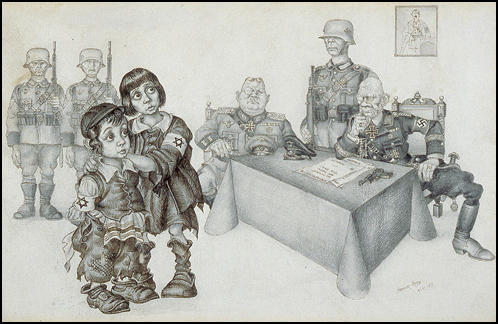
Peter H. Bergson (Hillel Kook) created a series of interlocking organizations, including the Committee for a Jewish Army of Stateless and Palestinian Jews and the American League for a Free Palestine. In July, 1943, Bergson selected Szyk's cartoon, To Be Shot as Dangerous Enemies of the Third Reich to appear on prints and fundraising stamps for his Emergency Committee to Save the Jewish People of Europe. (33)
The holocaust historian, Deborah Lipstadt, later praised the work of Arthur Szyk and I. F. Stone in the PM newspaper: "The dispassion, if not indifference, of most of the press becomes all the more noteworthy when it is compared to the behaviour of publications such as the the New York Post, The Nation, The New Republic, Commonweal and PM." Lipstadt goes on to argue that the people who worked for these publications "had no more information than the rest of their colleagues. In fact, some of them depended on reports in other major dailies for their information... The real difference between these publications and the vast majority of the rest of the press is not between belief and disbelief, but between action and inaction, passion and equanimity." (34)
Over a two year period Theodor Geisel produced over 400 cartoons. Sometimes he was accused of going too far. This included one that was published on 13th February, 1942, that suggested all Japanese Americans were latent traitors or fifth-columnists. (24) Richard H. Minear, the author of Dr. Seuss Goes to War (1999) claims that other cartoons "deplored the racism at home against Jews and blacks that harmed the war effort". (25)
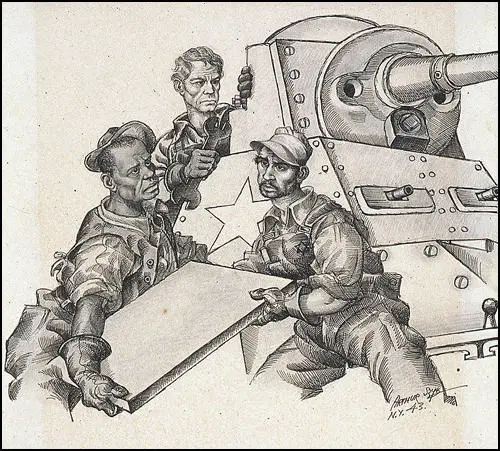
Arthur Szyk was also interested in the subject of race relations in the United States. He was one of the first artist's to criticize segregation and other aspects of racism against blacks in the American armed forces. As Steven Heller has pointed out "his art drew attention to the Native American struggle and to the racism directed toward African Americans." (35)
In 1946 Marshall Field III was tired of losing money and decided to allow the newspaper to take advertising. Ralph Ingersoll resigned in protest. However, this did not solve the newspaper's financial problems and it closed in June, 1948. (36) Robert Lasch wrote in Atlantic Monthly: "During the crucial two years of its life. PM was Ingersoll and Ingersoll was PM. In its flight from the evil influence of advertisers, in its admirable struggle to escape one-man domination by a publisher, PM delivered itself to the one-man domination of Ingersoll. Had Ingersoll been the kind of editor who could submerge his personality in a corporate identity, this might have worked. But PM never had a chance to be his lengthened shadow. It became instead the stage on which he continued an intellectual strip tease." (37)
Primary Sources
(1) I. F. Stone, PM newspaper (14th March, 1942)
It is a pity that Hitler's Reich does not have a Martin Dies. A special Committee of the Reichstag to harass Nazi officials and spread suspicion of Germany's allies could be forgiven the occasional exposure some notorious democrat. On a purely reciprocal basis the Reich might well go in for a Dies committee of its own in exchange for the growing readiness of our Congress to adopt innovations from Berlin.
Saying "Ja" to Mr. Dies has become a habit with the House. Tom Eliot and Vito Marcantonio, the only two Congressmen with the courage to se the latest request for an extension of his committee, were cut in with a motion to adjourn. Dies was forced to make some kind of compromise that he would "lay off the reds," but no one expects him to keep it. He will soon be helping us to win the war - by summoning Leon Henderson from the task of price control to say whether he was ever a technocrat.
(2) I. F. Stone, PM newspaper (10th June, 1944)
I have been over a mass of material, some of it confidential, dealing with the plight of the fast-disappearing Jews of Europe and with the fate of suggestions for aiding them, and it is a dreadful story... I need not dwell upon the authenticated horrors of the Nazi internment camps and death chambers for Jews. That is not tragic but a kind of insane horror. It is our part in this which is tragic. The essence of tragedy is not the doing of evil by evil men but the doing of evil by good men, out of weakness, indecision, sloth, inability to act in accordance with what they knew to be right.
The tragic element in the fate of the Jews of Europe lies in the failure of their friends in the West to shake loose from customary ways and bureacratic habit, to risk inexpediency and defy prejudice, to be whole-hearted, to care as deeply and fight as hard for the big words we use, for justice and for humanity, as the fanatic Nazi does for his master race or the fanatic Jap for his Emperor. A reporter in Washington cannot help seeing this weakness all about him. We are half-hearted about our economic warfare, about blacklisting those who help our enemies, about almost everything in the war except the actual fighting.
There is much we could have done to save the Jews of Europe before the war. There is much we could have done since the war began. There are still things we could do today which would give new lives to a few and hope to many. The hope that all is not black in the world for his children can be strong sustenance for a man starving in a camp or entering a gas chamber. But to feel that your friends and allies are wishy-washy folk who mean what they say but haven't got the gumption to live up to it must brew a poisonous despair....
The facts are simple. Thanks to the International Red Cross and the good folk the Quakers, thanks to courageous non-Jewish friends in the occupied countries themselves and to intrepid Jews who run a kind of underground railway under Nazi noses, something can still be done to alleviate the suffering of the Jews in Europe and some Jews can still be got out... The main problem is to get Jews over the Turkish border without a passport for transit to Palestine. "Free ports" in Turkey are needed, but the Turks, irritated by other pressure from England and the United States, are unwilling to do for Jewish refugees what we ourselves are still unwilling to do, that is, give them temporary haven. Only an executive order by the President establishing "free ports" in this country can prove to the Turks that we are dealing with them in a good faith; under present circumstances they cannot but feel contemptuous of our pleas. And the longer we delay the fewer Jews there will be left to rescue, the slimmer the chances to get them out. Between 4,000,000 and 5,000,000 European Jews have been killed since August 1942, when the Nazi extermination campaign began.
(3) Robert Lasch, Atlantic Monthly (June, 1948)
During the crucial two years of its life. PM was Ingersoll and Ingersoll was PM. In its flight from the evil influence of advertisers, in its admirable struggle to escape one-man domination by a publisher, PM delivered itself to the one-man domination of Ingersoll. Had Ingersoll been the kind of editor who could submerge his personality in a corporate identity, this might have worked. But PM never had a chance to be his lengthened shadow. It became instead the stage on which he continued an intellectual strip tease.
Student Activities
British Newspapers and Adolf Hitler (Answer Commentary)
Heinrich Himmler and the SS (Answer Commentary)
Adolf Hitler's Early Life (Answer Commentary)
Adolf Hitler v John Heartfield (Answer Commentary)
The Hitler Youth (Answer Commentary)
German League of Girls (Answer Commentary)
Night of the Long Knives (Answer Commentary)
The Political Development of Sophie Scholl (Answer Commentary)
The White Rose Anti-Nazi Group (Answer Commentary)
Kristallnacht (Answer Commentary)
Trade Unions in Nazi Germany (Answer Commentary)
Hitler's Volkswagen (The People's Car) (Answer Commentary)
Women in Nazi Germany (Answer Commentary)
The Assassination of Reinhard Heydrich (Answer Commentary)
The Last Days of Adolf Hitler (Answer Commentary)
